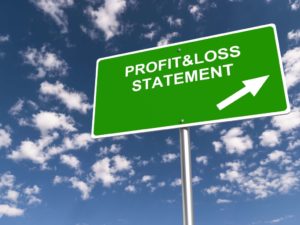
The touring bicycles product line is a high-volume line, while the mountain bicycle is a low-volume, specialized product. Chartered accountant Michael Brown is the founder and CEO of Double Entry Bookkeeping. He has worked as an accountant and consultant for more than 25 years and has built financial models for all types of industries. He has been the CFO or controller of both small and medium sized companies and has run small businesses of his own. He has been a manager and an auditor with Deloitte, a big 4 accountancy firm, and holds a degree from Loughborough University. The cost of your office rent would be considered overhead because it’s something you have to pay regardless of how many t-shirts you sell.
- However, there are a few points of differences that make each preferable by firms as per their requirements and suitability.
- That means it represents an estimate of the costs of producing a product or carrying out a job.
- Each option has its pros and cons, and the best option depends on the organization’s needs and the type of products or services being produced.
- The total amount ofoverhead should be the same whether using activity-based costing ortraditional methods of cost allocation to products.
- Notice that the formula of predetermined overhead rate is entirely based on estimates.
Examples of Overhead Rates

To avoid such fluctuations, actual overhead rates could be computed on an annual or less-frequent basis. However, if the overhead rate is computed annually based on the actual costs and activity for the year, the manufacturing overhead assigned to any particular job would not be known until the end of the year. For example, the cost of Job 2B47 at Yost Precision Machining would not be known until the end of the year, even though the job will be completed and shipped to the customer in March. For these reasons, most companies use predetermined overhead rates rather than actual overhead rates in their cost accounting systems. A predetermined overhead rate is calculated at the start of the accounting period by dividing the estimated manufacturing overhead by the estimated activity base.
- If the actual overhead costs incurred are greater than the overhead costs allocated using the predetermined overhead rate, then there is underapplied overhead.
- If the required rate of return is 10%, help the investor determine its present value.
- You would then take the measurement of what goes into production for the same period.
- The movie industry uses job order costing, and studios need to allocate overhead to each movie.
Calculating Manufacturing Overhead Cost for an Individual Job
Predetermined overhead rate (POR) is a crucial aspect of cost accounting that helps in the allocation of indirect costs to products or services. The POR is calculated by dividing estimated overhead costs by an estimated level of activity or production, such as direct labor hours or machine hours. The use of POR is essential in determining the total cost of production, which pohr formula is necessary for pricing decisions, budgeting, and financial reporting. In this blog, we will discuss the role of POR in underapplied overhead and how it affects a company’s financial statements.
- A large company with a corporate office, a benefits department, and a human resources division will have a higher overhead rate than a company that’s far smaller and with fewer indirect costs.
- Both plantwide rate and departmental rate are means of estimating the overhead cost allocation to products and services.
- If the company produced and sold 10,000 units during the year, the underapplied overhead of $20,000 would be added to the cost of goods sold, resulting in an increase of $2 per unit.
- Common activity bases used in the calculation include direct labor costs, direct labor hours, or machine hours.
Overhead Allocation Rate Formula

The predetermined overhead rate is then applied to production to facilitate determining a standard cost for a product. Calculating the predetermined overhead rate is an essential step in the process of determining the total manufacturing costs of a product or service. The predetermined overhead rate is the estimated amount of overhead costs that will be incurred for balance sheet each dollar of direct labor or machine hours used in production.
Practical Application of Predetermined Overhead Allocation Rate
The chosen base should provide a fair and reasonable representation of how the overheads are actually incurred. Using this method ensures that products consuming more resources are assigned a higher portion of overhead costs than those that require fewer resources. It aids in achieving appropriate product costing and subsequently, appropriate pricing. The Predetermined Overhead Allocation Rate is a rate that’s calculated at the beginning of an accounting period. Estimating before the period is advantageous as it assists with necessary cost predictions. It grants businesses a roadmap to lead their budgeting, pricing, and financial plans.
4: Compute a Predetermined Overhead Rate and Apply Overhead to Production

Thus, this total overhead is divided by the total direct cost to ascertain the single plantwide overhead rate. Overhead costs are then allocated to production according to the use of that activity, such as the number of machine setups needed. In contrast, the traditional allocation method commonly uses cost drivers, such as direct labor or machine hours, as Retail Accounting the single activity.